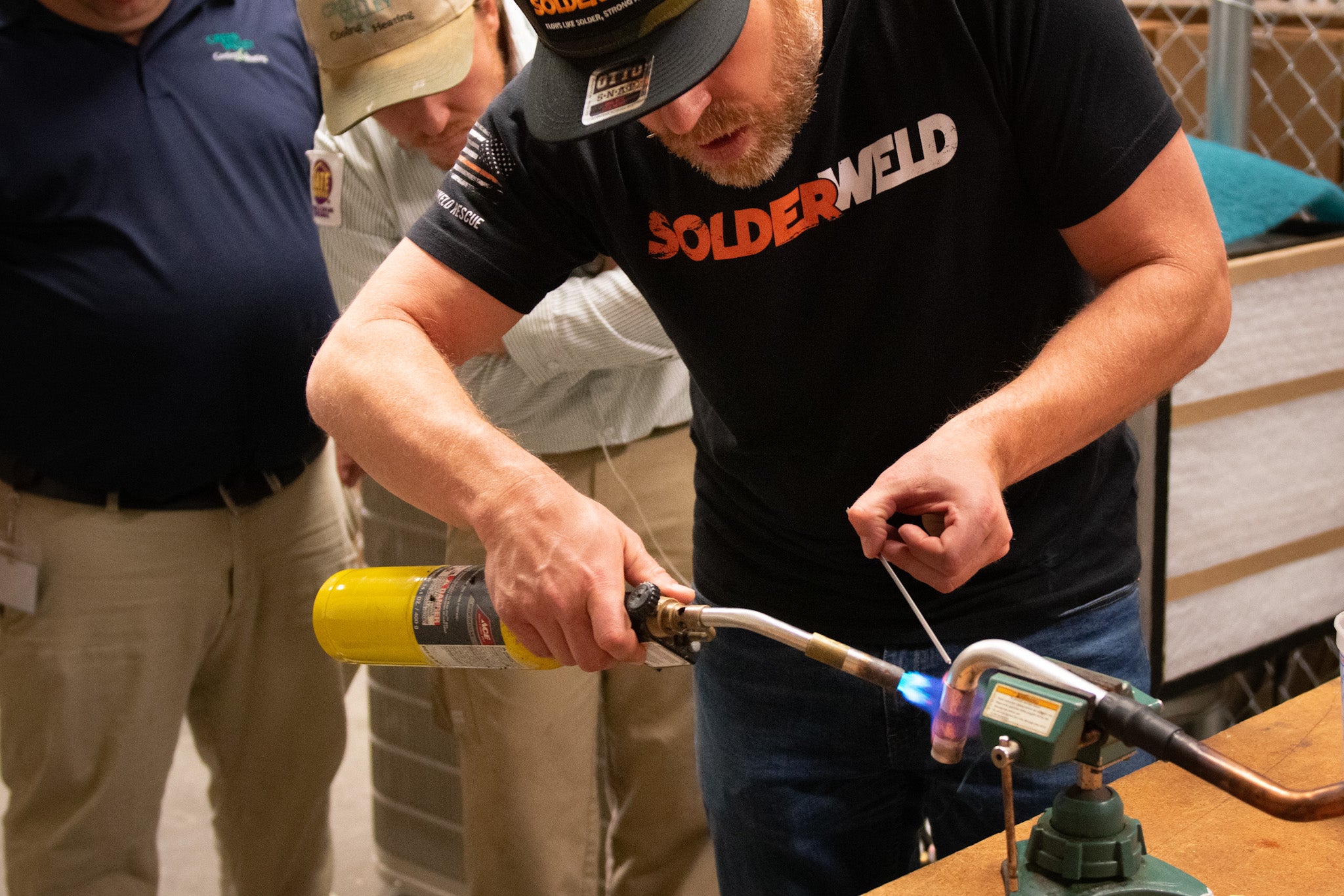Article: Soldering & Brazing vs. Pressing: Choosing the Right Method for Pipe Joining

Soldering & Brazing vs. Pressing: Choosing the Right Method for Pipe Joining
When it comes to joining pipes in plumbing, HVAC, and other systems, there are several methods available. Two common methods are soldering/brazing and pressing connections. Both techniques have their own set of advantages and disadvantages, and choosing the right one depends on various factors such as the application, materials being used, and installer preferences. In this blog post, we'll explore the differences between soldering/brazing and pressing connections to help you make an informed decision.
Understanding Soldering: Soldering is a process that involves joining two metal components using a heated filler metal called solder. The solder melts and flows into the joint, creating a strong and permanent bond when it solidifies. Soldering is commonly used for joining copper pipes in plumbing systems. Brazing is close to the same process, yet the main difference is the amount of heat used in the application. Brazing is done at a higher temperature in the application of the filler metal.
Advantages of Soldering and Brazing:
- Strength: Soldered and Brazed joints are typically stronger and more durable, capable of withstanding high pressure and temperature variations, this also includes vibration.
- Watertight Seal: Solder and brazing filler material forms a tight seal around the joint, reducing the risk of leaks.
- Versatility: Soldering and brazing can be used in various applications, including plumbing, HVAC, electrical, mechanical and electronics.
Disadvantages of Soldering and Brazing:
- Skill Requirement: Soldering/brazing requires skill and experience to ensure proper joint formation and prevent defects.
- Heat Hazard: Soldering/brazing involves the use of heat, which can pose a safety risk if not handled properly. Also the need for some type of heat absorption or stopping compound such as Hot Block, heat absorption putty should be used every time you are joining metals around any sensitive components. A wet rag is not reliable at stopping the heat transfer.
- Time-Consuming: Soldering/brazing can be a time-consuming process, especially for large projects with many joints.
- Understanding Pressing Connections: Pressing connections, also known as press fittings or crimp fittings, involve using a specialized tool to compress a fitting onto the pipes, creating a secure seal. Press fittings are commonly used with materials such as copper, stainless steel, and PEX.
Advantages of Pressing Connections:
- Speed: Pressing connections are quick and easy to install, making them ideal for large projects or time-sensitive applications.
- No Heat Required: Press fittings eliminate the need for heat, reducing the risk of fire hazards and making them safer to use.
- Vibration Resistance: Pressed joints are more resistant to vibration and movement than soldered joints, reducing the risk of joint failure.
Disadvantages of Pressing Connections:
- Equipment Cost: Pressing tools can be expensive to purchase or rent, especially for occasional use. The material and press joints used in the press application are expensive.
- Limited Compatibility: Press fittings may not be compatible with all pipe materials or sizes, limiting their applicability in certain situations.
- Potential for Leaks: Improperly installed press fittings can lead to leaks or joint failures over time.
- Choosing the Right Method: When deciding between soldering/brazing and pressing connections, consider factors such as the specific requirements of the project, the materials being used, and the skill level of the installer. In general, soldering/brazing is preferred for applications where strength and durability are paramount, while pressing connections offer a faster and easier alternative for projects where speed and convenience are key.
Both soldering & brazing and pressing joints are effective methods for joining pipes in plumbing, HVAC, and other systems. By understanding the advantages and disadvantages of each method, you can make an informed decision, based on your project's requirements and constraints. Whether you choose soldering & brazing or pressing connections, proper installation techniques and adherence to industry standards are essential for ensuring reliable and long-lasting joints.
Always feel free to call us here at SolderWeld, Inc. for answers to questions regarding any of these techniques.
All Trades, One Family…..



1 comment
buenas tardes.
quisiera saber si ustedes me pueden cotizar y suministrar este producto :
BRAZE ROD, GBZ24 FLUX CORE – 68001852
SILVINA SANCHEZ
Leave a comment
This site is protected by hCaptcha and the hCaptcha Privacy Policy and Terms of Service apply.